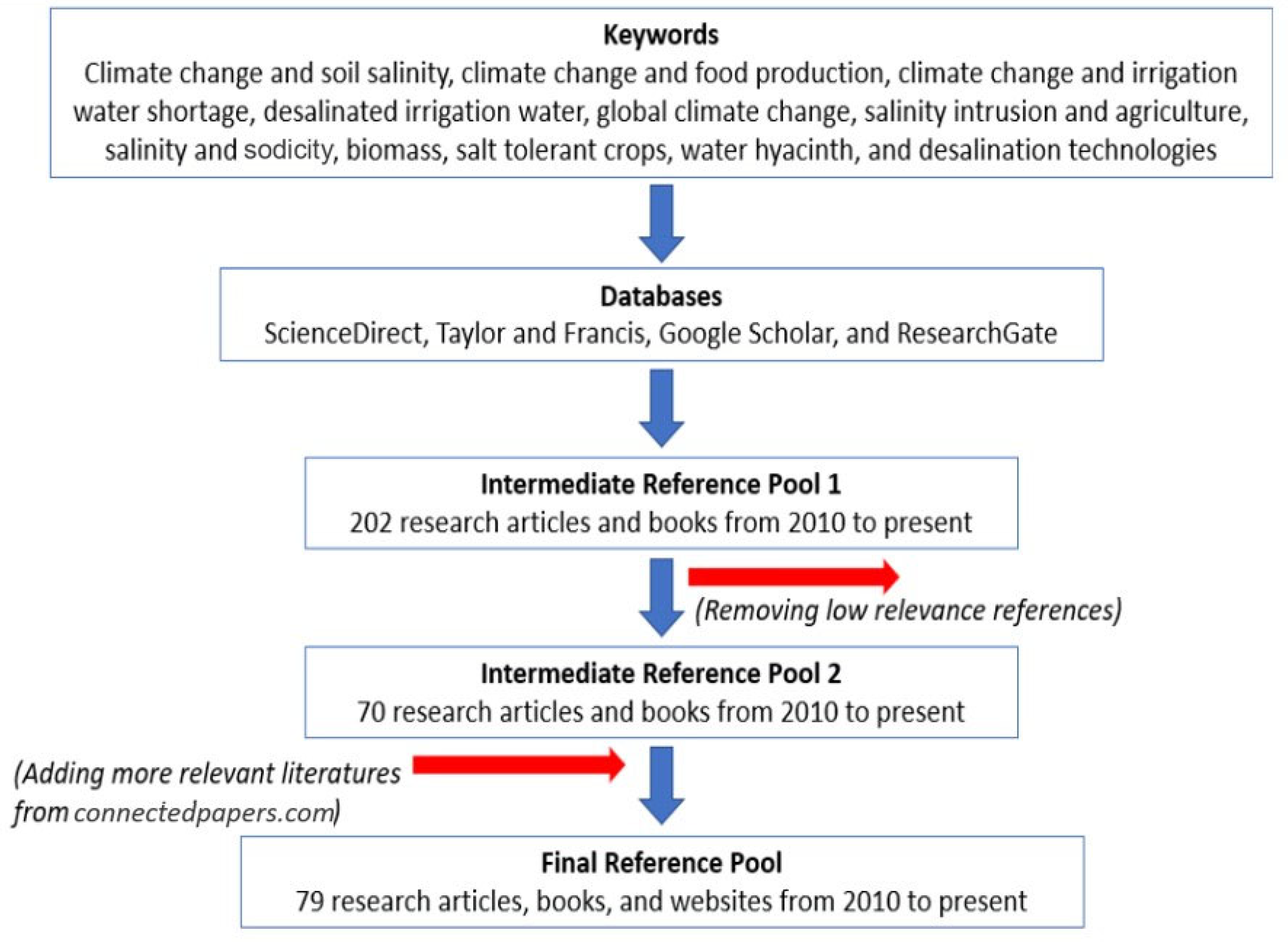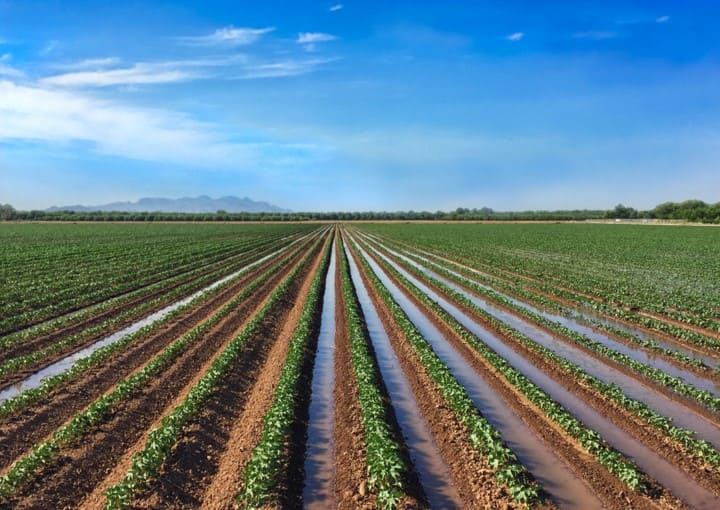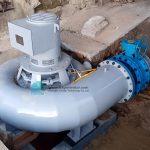Are you struggling with salinity in your irrigation water? It’s a problem that can sneak up on you, affecting plant health and reducing crop yields.
You might have noticed your plants aren’t thriving as they should, or maybe you’ve spotted the tell-tale signs of salt damage. Dealing with salinity can feel overwhelming, but you’re not alone. Many gardeners and farmers face this challenge, and the good news is there are practical solutions within your reach.
By understanding the causes and taking the right steps, you can protect your plants and boost your garden’s productivity. Stick around to discover effective strategies that can transform your irrigation practices and bring your garden back to life.

Causes Of Salinity In Irrigation Water
Salinity in irrigation water poses a significant challenge for farmers. Understanding the causes is crucial for effective management. Salinity affects soil health and crop yield. Let’s explore the main causes.
Natural Sources Of Salinity
Some water sources naturally contain high salt levels. Rivers and lakes can collect salts from surrounding rocks. When used for irrigation, these salts accumulate in the soil.
Human Activities
Farming practices contribute to salinity in water. Over-irrigation leads to increased salt levels. Fertilizers and pesticides add salts to water systems. These chemicals can seep into water supplies.
Industrial Discharges
Industries release waste into rivers and streams. This waste often contains high salt concentrations. Such discharges can pollute water sources used for irrigation.
Climatic Factors
Climate impacts the salinity of water. In arid regions, high evaporation rates increase salt concentration. Less rainfall means less dilution of salts in water bodies.
Groundwater Intrusion
In coastal areas, seawater can seep into groundwater. This process, called intrusion, raises salt levels in freshwater sources. Farmers often rely on this groundwater for irrigation.

Effects Of Salinity On Crop Growth
High salinity in irrigation water can harm crop growth. Plants absorb water and nutrients through their roots. Salty water complicates this process. This can lead to reduced crop yields and poor plant health. Understanding salinity’s effects on crops is crucial for farmers. It helps in managing and minimizing damage.
Osmotic Stress On Plants
Salty water creates osmotic stress in plants. This stress makes it hard for roots to absorb water. Plants appear wilted and growth slows down. In severe cases, plants may die. Managing water salinity reduces osmotic stress impacts.
Impact On Nutrient Uptake
Salinity affects nutrient absorption in crops. Essential nutrients become less accessible to plants. This nutrient imbalance stunts growth and reduces crop quality. Farmers should monitor and adjust nutrient levels carefully.
Specific Ion Toxicity
High salinity leads to toxic ion buildup. Sodium and chloride ions are common culprits. These ions damage plant tissues and interfere with growth. Sensitive crops show symptoms quickly. Regular testing helps detect and manage ion levels.
Reduced Seed Germination
Salinity impacts seed germination rates. Salty environments hinder seeds from sprouting. This results in lower plant populations in fields. Using fresh water during germination can improve outcomes.
Soil Structure Damage
Salinity changes soil structure negatively. It causes soil compaction and reduces water infiltration. This leads to poor root development. Maintaining soil health is vital for minimizing salinity effects.
Altered Crop Physiology
Salinity alters plant physiological processes. Photosynthesis and respiration rates decrease. This affects plant energy production and reduces growth. Understanding these changes aids in developing coping strategies.
Addressing salinity issues is key for healthy crops. Farmers should implement effective management practices. This ensures sustainable and productive agriculture.
Strategies For Managing Salinity
Managing salinity in irrigation water is crucial for healthy crops. Salinity can affect plant growth and soil structure. Effective strategies can mitigate these effects. Proper management ensures productive and sustainable agriculture. Below are several strategies to help manage salinity.
Understanding Soil Salinity Levels
Start by testing soil salinity levels regularly. Use a simple soil test kit. It helps identify the salt concentration in the soil. Knowing the salinity level guides your management plan. Adjust your practices based on test results.
Choosing The Right Crops
Some crops tolerate salinity better than others. Opt for salt-tolerant varieties when possible. Barley, cotton, and sugar beet are good options. These crops can handle higher salt levels. This choice reduces the impact of saline water.
Improving Drainage Systems
Effective drainage removes excess salts from the soil. Install proper drainage systems in your fields. This helps prevent salt accumulation. Ensure water can flow away from the root zone. Good drainage supports healthy plant growth.
Utilizing Gypsum Amendments
Gypsum can help manage soil salinity. It improves soil structure and reduces salt levels. Apply gypsum based on soil test recommendations. It promotes better water infiltration and root growth. Gypsum is a valuable tool in managing salinity.
Implementing Efficient Irrigation Techniques
Efficient irrigation reduces salt buildup in the soil. Drip irrigation is an excellent method. It delivers water directly to the plant roots. This minimizes water use and salt concentration. Precision irrigation supports sustainable farming.
Leaching Excess Salts
Leaching involves flushing salts out of the root zone. Apply extra water to move salts deeper. This process requires careful water management. Ensure adequate drainage to prevent waterlogging. Leaching maintains a healthier root environment.
Innovative Solutions For Reducing Salinity
Salinity in irrigation water poses challenges for agriculture. Innovative solutions like soil amendments and efficient water management help reduce salinity. These methods improve crop yield and maintain soil health.
Dealing with salinity in irrigation water can be a daunting task. Fortunately, innovative solutions are making it easier to manage and reduce salinity levels effectively. These solutions not only help protect your crops but also ensure sustainable water use. Let’s dive into some of these strategies and see how they can transform your irrigation practices.Installing Advanced Filtration Systems
Advanced filtration systems can significantly reduce salinity in irrigation water. These systems use membranes to filter out salt particles, providing cleaner water for your crops. Imagine how healthier your plants could be with improved water quality. Investing in these systems might seem costly upfront, but they can save you money in the long run by enhancing crop yields.Utilizing Desalination Techniques
Desalination isn’t just for seawater anymore. You can apply these techniques to your irrigation systems too. Desalination removes salts and other minerals, making water suitable for agriculture. Have you ever considered the possibility of converting salty water into a resource for your farm? This could be a game-changer for areas struggling with high salinity levels.Implementing Crop Rotation With Salt-tolerant Varieties
Crop rotation can be a strategic method to manage soil salinity. By planting salt-tolerant varieties, you give the soil a chance to recover and improve. Have you tried experimenting with different crop types? This approach not only helps with salinity but also enhances soil health over time.Applying Soil Amendments
Soil amendments like gypsum can help mitigate salinity effects. They work by displacing sodium ions, making the soil more hospitable for plants. Have you ever noticed how certain products can drastically change soil conditions? Using amendments is a practical way to improve your land without extensive overhauls.Exploring The Use Of Reclaimed Water
Reclaimed water offers a sustainable option for irrigation. It’s treated to remove contaminants, including salts, before being reused. Think about the environmental benefits of using reclaimed water on your farm. It’s an innovative way to conserve natural resources while addressing salinity challenges. Innovative solutions for reducing salinity are within reach. What’s stopping you from embracing these advancements? By integrating these methods, you can ensure your irrigation practices are both effective and sustainable.
Conclusion
Dealing with salinity in irrigation water requires careful planning. Test your water regularly. Choose salt-tolerant crops for better yields. Implement soil management practices to reduce salt buildup. Ensure proper drainage to prevent waterlogging. Consider using gypsum or organic matter to improve soil structure.
Monitor plant health closely for early signs of stress. Use efficient irrigation methods like drip systems to minimize salt impact. Stay informed about new techniques and technologies. Small changes can make a big difference. Keep learning and adapting your approach.
Your crops will thank you for it.



